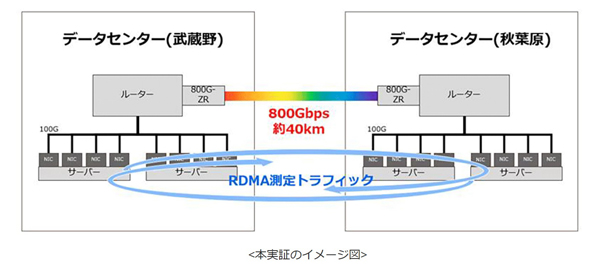Accelerating Data Center Decentralization NTT docomo business

NTT docomo business has achieved the world’s first high-speed data transfer in an environment where servers are distributed across different data centers by combining long-distance 800G-ZR connections with a proprietary tool (RDMA transfer tool) utilizing RDMA (Remote Direct Memory Access) technology.
This technology simplifies network configuration in distributed data centers, enabling high-speed data transfer while reducing power consumption and operating costs. By allowing distant data centers to function as a single data center, data center utilization becomes more flexible.
800G-ZR is attracting attention as an efficient network connection technology, not only for its high-capacity, high-speed transmission of 800 gigabits per second to accommodate the rapidly increasing traffic volume between data centers. As server interfaces evolve, 800G-ZR can transmit this aggregated traffic over long distances with low latency. Since RDMA allows direct connections to routers and other devices without the need for transmission equipment between network connection points, it simplifies network configuration and reduces power consumption and operating costs.
RDMA is a system that directly accesses the memory of the destination server to transfer data. High-speed data transfer is possible by writing data directly from one Network Interface Card (NIC) to another without going through the CPU. Previously, RDMA had issues with the quality of transfer processing when used over long distances, but our proprietary RDMA transfer tool enables high-speed data transfer even over long distances while minimizing CPU resource consumption.
In the demonstration, the time required to transfer 1,600 gigabytes of data was reduced from approximately 389 seconds to approximately 68 seconds, a reduction of up to one-sixth compared to conventional technology. CPU utilization also decreased from 20% to 5%, a reduction of up to one-fifth.
※Translating Japanese articles into English with AI
